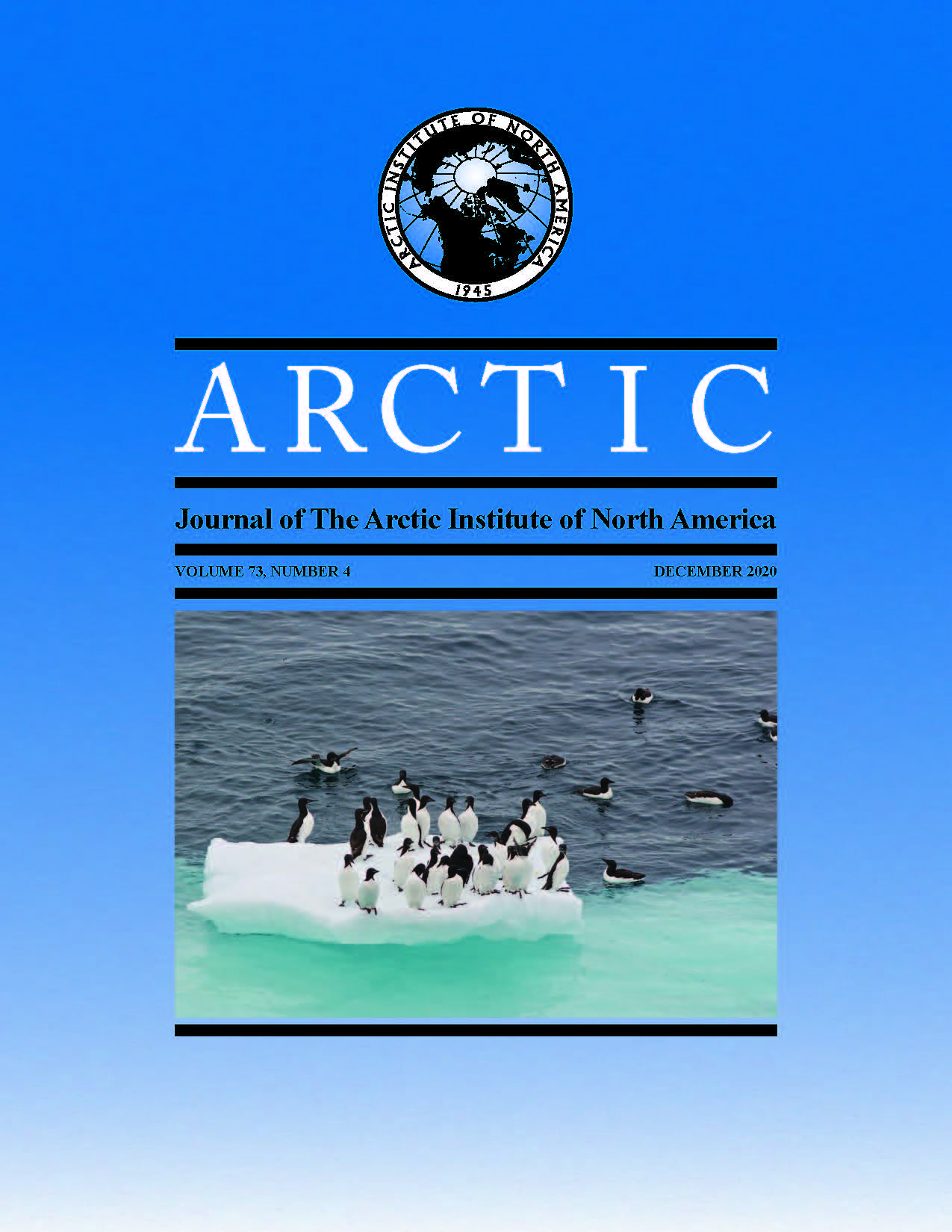Apparent Collapse of the Peary Caribou (Rangifer tarandus pearyi) Population on Axel Heiberg Island, Nunavut, Canada
DOI:
https://doi.org/10.14430/arctic71605Keywords:
Peary caribou; muskox; density surface model; Rangifer tarandus pearyi; Ovibos moschatus; Axel Heiberg IslandAbstract
In spring 2019, we conducted a comprehensive abundance and distribution survey for Peary caribou (Rangifer tarandus pearyi) and muskox (Ovibos moschatus) on Axel Heiberg Island, Nunavut, Canada. Although much of Axel Heiberg Island is rugged and extensively glaciated, areas east of the Princess Margaret mountain range have high productivity given the latitude and have supported relatively large numbers of Peary caribou and muskoxen. This region of the island has been previously identified as a potential High Arctic refugium. The last island-wide survey, in 2007, estimated 4237 muskoxen (95% confidence interval [CI] [3371:5325]) and 2291 Peary caribou (95% CI [1636:3208]); based on our 2019 results, it appears that muskox numbers have been stable on Axel Heiberg Island since then. Using distance sampling and density surface models, we estimated 3772 muskoxen (95% CI [3001:4742]) on Axel Heiberg Island during our 2019 survey. In contrast, Peary caribou, which is listed as an endangered species under the Canadian Species at Risk Act, appear to have declined dramatically from the 2007 estimate. During the 2019 survey, we observed only six Peary caribou and could not generate an island-wide estimate. Abrupt declines in numbers are characteristic of the species and are usually related to poor winter conditions such as dense snowpack or extreme weather events that result in widespread ground-fast icing. However, the limited monitoring information available at the northern extent of Peary caribou range presents major challenges to our understanding of the mechanisms leading to this near total absence of approximately 20% of range-wide Peary caribou numbers.
Downloads
Downloads
Published
Issue
Section
License
Copyright (c) 2020 ARCTIC

This work is licensed under a Creative Commons Attribution 4.0 International License.


